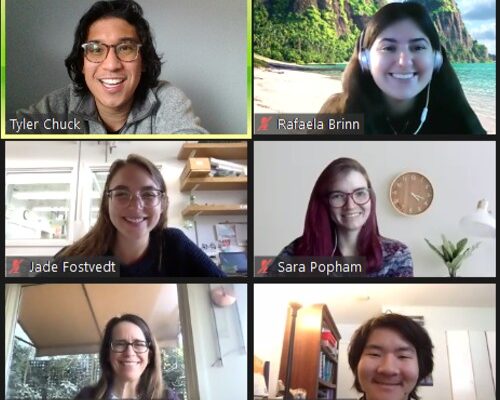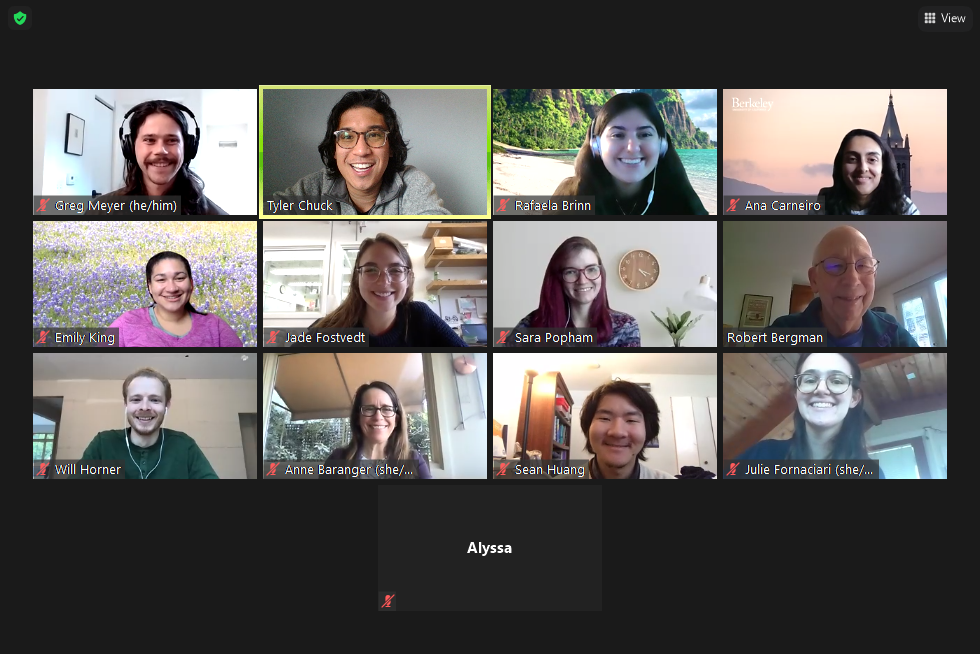
Reflections on Outreach During the Pandemic
May 2021
By: Tyler Chuck, CRS Senior Manager, Outreach and Engagement
From seed to space, from vaccines to volcanos, and from bees to engineering challenges, outreach presentations during the pandemic covered a huge range of fascinating and familiar topics. With scientists talking from the squares of a Zoom screen instead of around clusters of small tables in classrooms, the students they visited were as enthusiastic, curious, goofy, and engaged as ever.
In my role managing our outreach programs, I have been astonished and deeply impressed by the optimism, creativity, and thoughtful approach our BASIS and Be a Scientist volunteers have taken to making strong connections with more than 18,000 wriggly kindergarteners, earnest third graders, and trying-to-hide-their enthusiasm 7th graders from a distance.
Science at home even had some hidden benefits, such as greater family engagement. Observed one scientist, “So many students bring their younger siblings into the virtual lesson - I loved seeing how proud they were to teach their younger brothers and sisters!”
Throughout the year, teachers have written or called to tell us how meaningful the BASIS lesson was, and how impactful it has been even days and weeks after the presentation. One teacher said, “Some of my students said this was the best field trip they ever had!” Another told us, “The flexibility of the scientist was wonderful! We loved the virtual tour of the lab!”

Highlights from the 2020-21 school year:
- 750+ virtual BASIS lessons
- 700 7th grade mentors
- Hundreds of scientists from UC Berkeley, Lawrence Lab, and local employers like Clorox, Amyris, Port of Oakland, Maze and more
- Special “Day of Science” events reached students from entire schools in a single day in a virtual festival format
Scientists rose to the challenge of finding creative strategies to immerse students in active learning at a distance. One teacher who hosts BASIS teams each year noted this year’s virtual presentation was the “most creative yet!” She added, “The idea of traveling through a rainforest, with sound and images, was a great way to address the information. The scientific information was very well chunked and clearly explained!!”
This Spring, we launched another year of lessons featuring Cal undergraduates in anatomy, carrying forward the legacy of UC Berkeley Professor Marian Diamond. Students led lessons that focus on human organs and body systems. With the excellent student-lead leadership from Victoria Lynne, Fiona Li, and Annika McBride along with administrative support from Jill Marchant, we had one of the most successful Anatomy DeCal courses in recent memory. Each of the 15 teams taught their anatomy focused lesson to at least 4 different classes -- reaching nearly 2,000 students!
Our Be a Scientist program has creatively pressed onward during distance learning as well, adapting to meet the needs of students at home at King, Willard, and Longfellow Middle Schools. More than 125 graduate students brought their creative energy to this year’s virtual friendly format: all students received a large materials kit with the challenge of devising experiments using only the materials provided. “We took an Apollo 13 approach -- you can only use what you have in the kit,” explained coordinator Darlene Yan.
While we are eager to return to learning together in person, thousands of enthusiastic young learners laughed and learned together with hundreds of scientists from diverse backgrounds who encouraged kids to explore their world, and to imagine their own futures in science fields.